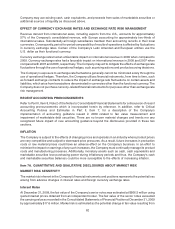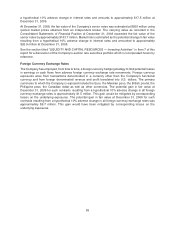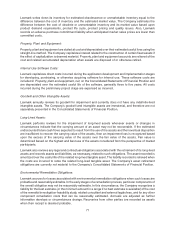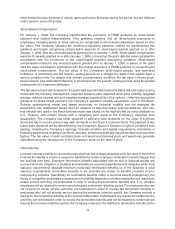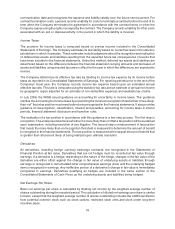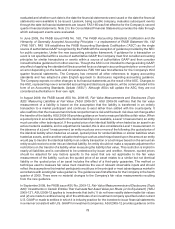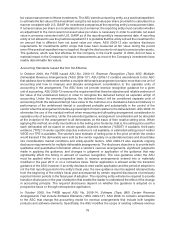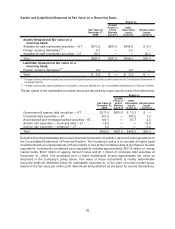Lexmark 2009 Annual Report Download - page 78
Download and view the complete annual report
Please find page 78 of the 2009 Lexmark annual report below. You can navigate through the pages in the report by either clicking on the pages listed below, or by using the keyword search tool below to find specific information within the annual report.
Warranty:
Lexmark provides for the estimated cost of product warranties at the time revenue is recognized. The
amounts accrued for product warranties are based on the quantity of units sold under warranty, estimated
product failure rates, and material usage and service delivery costs. The estimates for product failure rates
and material usage and service delivery costs are periodically adjusted based on actual results. For
extended warranty programs, the Company defers revenue in short-term and long-term liability accounts
(based on the extended warranty contractual period) for amounts invoiced to customers for these
programs and recognizes the revenue ratably over the contractual period. Costs associated with
extended warranty programs are expensed as incurred.
Shipping and Distribution Costs:
Lexmark includes shipping and distribution costs in Cost of Revenue on the Consolidated Statements of
Earnings.
Revenue Recognition:
General
Lexmark recognizes revenue when persuasive evidence of an arrangement exists, delivery has occurred,
the sales price is fixed or determinable and collectibility is reasonably assured. Revenue as reported in the
Company’s Consolidated Statements of Earnings is reported net of any taxes (e.g., sales, use, value
added) assessed by a governmental entity that is directly imposed on a revenue-producing transaction
between a seller and a customer.
The following are the policies applicable to Lexmark’s major categories of revenue transactions:
Products
Revenue from product sales, including sales to distributors and resellers, is recognized when title and risk
of loss transfer to the customer, generally when the product is shipped to the customer. Lexmark
customers include distributors, resellers and end-users of Lexmark products. When other significant
obligations remain after products are delivered, such as contractual requirements pertaining to customer
acceptance, revenue is recognized only after such obligations are fulfilled. At the time revenue is
recognized, the Company provides for the estimated cost of post-sales support, principally product
warranty, and reduces revenue for estimated product returns.
Lexmark records estimated reductions to revenue at the time of sale for customer programs and incentive
offerings including special pricing agreements, promotions and other volume-based incentives. Estimated
reductions in revenue are based upon historical trends and other known factors at the time of sale.
Lexmark also records estimated reductions to revenue for price protection, which it provides to
substantially all of its distributors and reseller customers.
Services
Revenue from support or maintenance contracts, including extended warranty programs, is recognized
ratably over the contractual period. Amounts invoiced to customers in excess of revenue recognized on
support or maintenance contracts are recorded as deferred revenue until the appropriate revenue
recognition criteria are met. Revenue for time and material contracts is recognized as the services are
performed.
Multiple Element Revenue Arrangements
Lexmark enters into transactions that include multiple elements, such as a combination of products and
services. Revenue for these arrangements is allocated to each element based on its relative fair value and
is recognized when the revenue recognition criteria for each element have been met. Relative fair value
72


